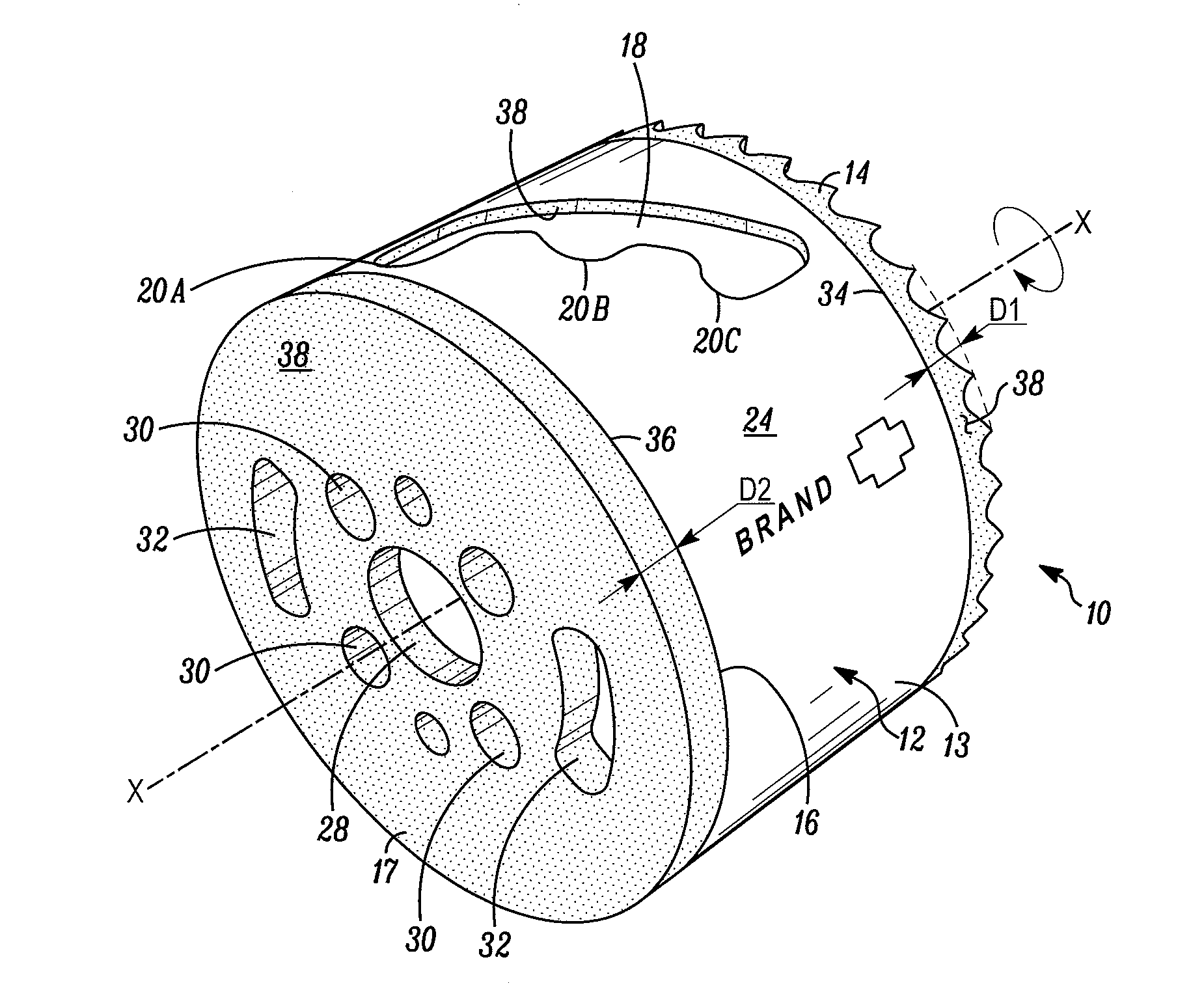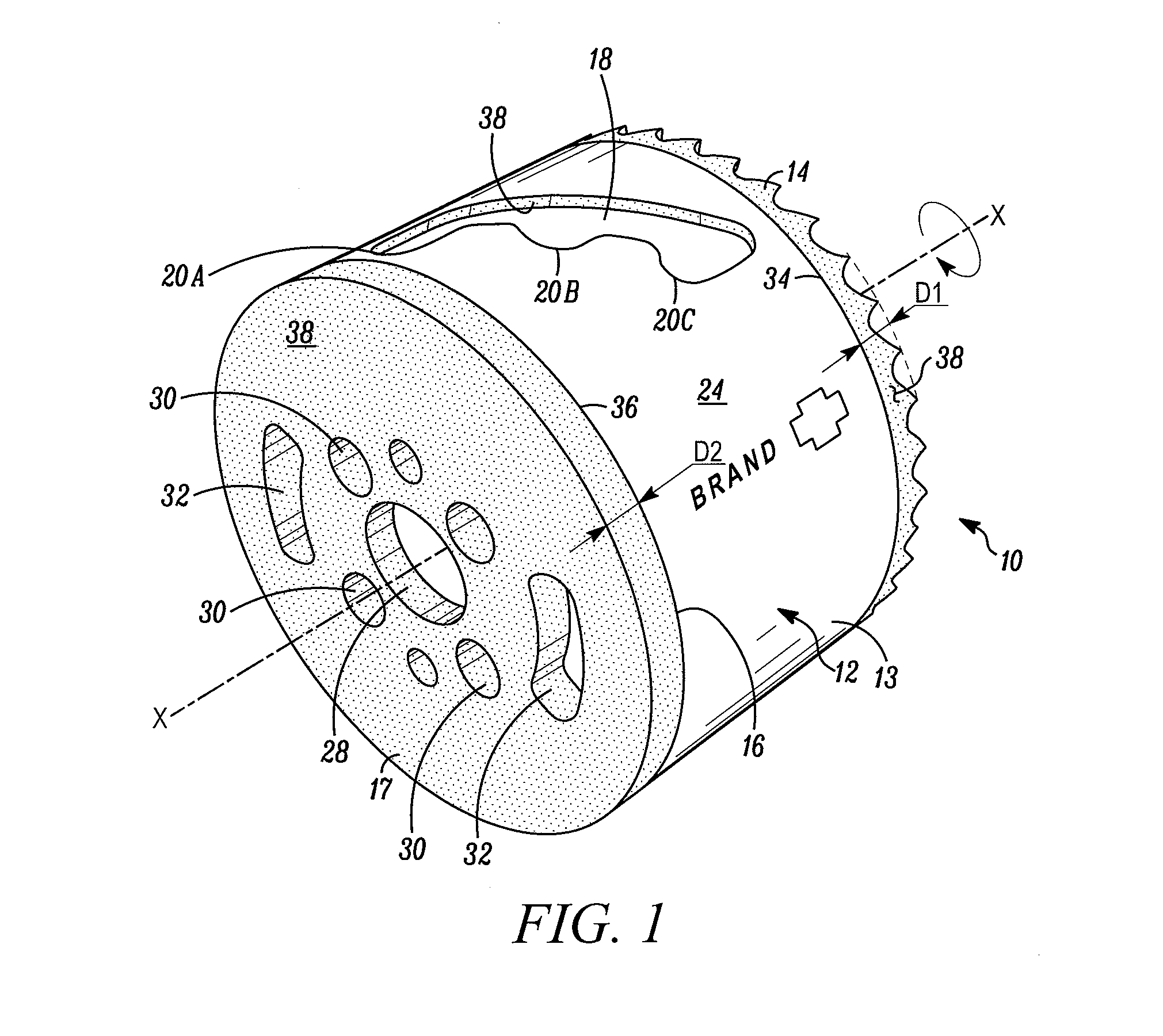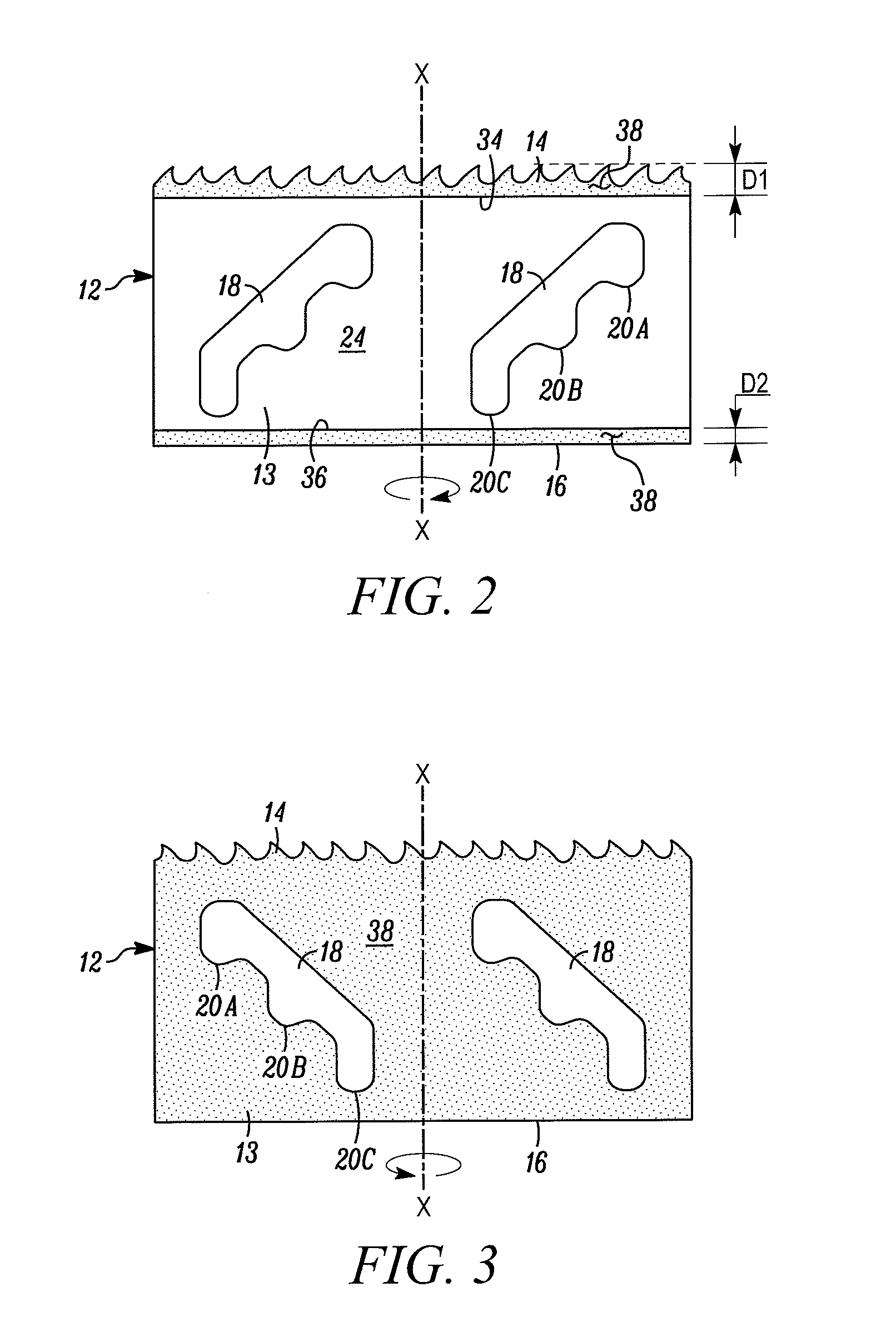Coated hole cutter
a hole cutter and coating technology, applied in the field of hole cutters, can solve the problems of increasing the cost of the hole cutter to consumers, increasing the manufacturing cost, and requiring a relative large amount of coating material to coat the cutter, so as to reduce interfere with the cutting efficiency of the hole cutter
- Summary
- Abstract
- Description
- Claims
- Application Information
AI Technical Summary
Benefits of technology
Problems solved by technology
Method used
Image
Examples
Embodiment Construction
[0022]In FIG. 1, a hole cutter embodying the present invention is indicated generally by the reference numeral 10. The term “hole cutter” is used herein to mean a tool that cuts holes in work pieces, such as wood or metal work pieces, and includes without limitation hole saws. The hole cutter 10 includes a blade body 12 defining a side wall 13. The blade body 12 is shown in FIGS. 2 and 3 in its flattened state; however, as shown in FIG. 1, the blade body 12 is rolled or otherwise formed into a substantially cylindrical shape to form the hole cutter 10. As shown in FIG. 1, the side wall 13 extends around an axis of rotation “X” of the hole cutter 10 to define the substantially cylindrical blade body 12. One end of the blade body 12 is provided with a cutting edge 14 oriented substantially perpendicular to the axis of rotation X, and the opposing end of the blade body defines a rim 16. As shown in FIGS. 1 and 3, a cap 17 is fixedly secured, such as by welding, to the rim 16 to enclose...
PUM
| Property | Measurement | Unit |
|---|---|---|
| thick | aaaaa | aaaaa |
| temperature | aaaaa | aaaaa |
| temperature | aaaaa | aaaaa |
Abstract
Description
Claims
Application Information
 Login to View More
Login to View More - R&D
- Intellectual Property
- Life Sciences
- Materials
- Tech Scout
- Unparalleled Data Quality
- Higher Quality Content
- 60% Fewer Hallucinations
Browse by: Latest US Patents, China's latest patents, Technical Efficacy Thesaurus, Application Domain, Technology Topic, Popular Technical Reports.
© 2025 PatSnap. All rights reserved.Legal|Privacy policy|Modern Slavery Act Transparency Statement|Sitemap|About US| Contact US: help@patsnap.com



